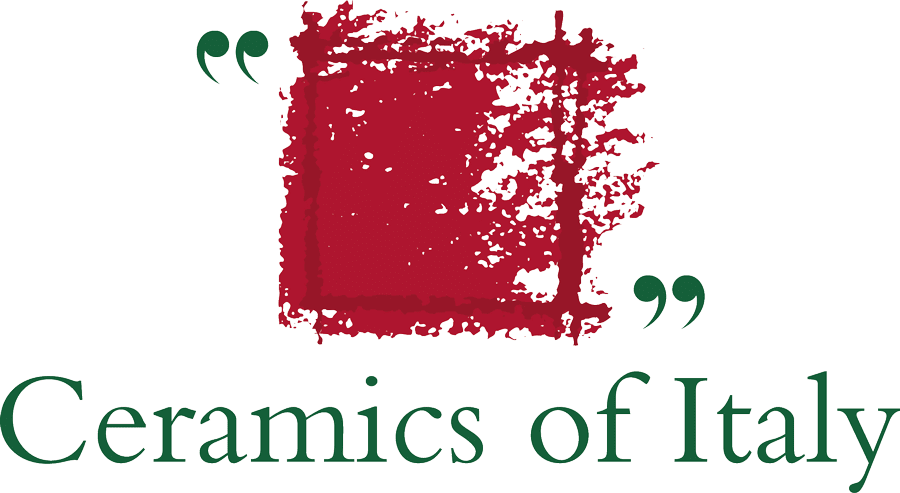The Ceramics of Italy for Sustainability communication and promotional campaign has got under way with the launch of a video created by Milan-based agency Muse Factory of Projects on the institutional website ceramica.info, which will be shared through an extensive social media presence in Italy and abroad. The aim of the campaign is to communicate the efforts and achievements in the field of sustainability made by the Italian ceramic industry (tiles, sanitaryware, tableware, bricks and roof tiles) as a concrete result of the work carried out by the Association in recent months.
“Earth, water, fire and air. The essential elements that make up Italian ceramics. For thousands of years, the ingredients have remained unchanged. The only thing that has evolved is the process, part of a circular lifecycle.” These are the opening words of the video, which highlights the four natural elements that make up Italian ceramics with a clear reference to the environment and the planet. It is a universal message that can be understood by all cultures and is linked to sustainability and the environment. It also features a human presence in the form of a young woman who represents Italian ceramic in its interactions with the natural elements. The narrative voice presents the natural qualities of Italian products and their production process, durability and recyclability, their unique combination of beauty and style and their ability to preserve the planet for future generations.
The emotional, highly evocative video embraces a range of intentionally non-stereotypical Italian landscapes, from the Salse di Nirano mud volcanoes to the olive groves of Lake Garda, interspersed with scenes of industrial processes. The background music adds elegance and emotion to the portrayal of Italian ceramic excellence. The video ends with a call to action, an invitation to visit the ceramica.info website and to discover Italian ceramics at Cersaie 2022.
The emotionally-charged video captures the viewer’s attention through the beauty of the locations and the meticulous storytelling and cinematography, while at the same time introducing some of the stages in the production process and the finished products themselves. It offers a journey through sensorial perceptions and the tangible nature of manufacturing to help viewers fully appreciate the value of Italian ceramics and to encourage them to learn more about all their aspects of sustainability.
The video is the cornerstone of the communication and promotion campaign, which consists of an extensive landing page on staging.ceramica.info (available in five different language versions) and a campaign devoted entirely to the sustainability of the Italian ceramic industry and products on the social media used by Ceramics of Italy, ceramica.info and Cersaie worldwide.
The sustainability of the various segments of the Italian ceramic industry (tiles and slabs, sanitaryware, tableware, bricks and roof tiles, refractory materials and technical ceramics) is explored through five different thematic areas. The first thematic area focuses on the Italian ceramic industry and the enormous investments that have been made over the years (€2.2 billion in the last six years alone), resulting in a manufacturing process that has minimised its energy requirements and atmospheric emissions, recycles its production waste and uses only natural raw materials. The second thematic area is corporate social responsibility, which takes the form of almost a dozen protocols regarding occupational health and safety, numerous corporate welfare initiatives and the Foncer sector pension fund. The third thematic area is that of sustainable finished products and materials and is the result of much hard work both inside factories and along the entire supply chain. Ceramic and clay products are sustainable materials regardless of where they are produced around the world. But Italian ceramics raise the bar even higher thanks to the use of high percentages of post-consumer recycled materials, compliance with environmental building protocols, and roofing systems that improve the level of indoor comfort. The fourth thematic area explores the important role played by Italian ceramic products in sustainable contemporary architecture. Finally, the campaign focuses on the planet as a whole and the industry’s efforts to reduce its ecological footprint. This includes extensive use of rail transport for raw materials and finished products, as well as a range of information and transparency initiatives such as the publication of company sustainability reports which help raise awareness of the progress the industry has already made and the steps it will take in the future.
A sixth section contains the video tutorials designed to educate the various stakeholders about the sustainability of the Italian ceramic industry and its products. The basic premise is that while sustainability is a highly topical issue, it is essential to provide a clear and simple explanation of the ways in which ceramic and clay products can help reduce our own impact on the environment.
The campaign, created in cooperation with the agency Exprimo, adopts a new communicative approach that aims to educate both market players and end consumers. Figures and statistics are used as a measure of performance and are an integral part of the information presented, which takes three forms: text, infographics and short explanatory videos.
Constant communication with the various markets is crucial for an industry that exports 85% of its output all over the world. With this in mind, a social media campaign has been created in collaboration with the communication agency PPAN to promote the short version of the sustainability video and the various thematic contents regarding the Italian ceramic industry.
The first step was to create a visual identity that would make the sustainability campaign clearly recognisable. The images are accompanied by a dynamic pattern of elements reminiscent of traditional hexagonal floor tiles in various shades of green. The distinctive Hepta Slab typeface also contributes to the effectiveness in terms of visual communication.
Two types of editorial content are used. First, images and texts relating to the individual characteristics of the Italian ceramic industry, such as production processes and their impact on the planet; secondly, state-of-the-art eco-friendly projects carried out in Italy and worldwide. The editorial programme focuses on the two concepts of “ceramics” and “sustainability” and is expressed through data and storytelling. The figures provide a concrete point of reference both for the target community of professionals and for non-experts, while the stories range from architectural works that stand out for their aesthetic quality, comfort and low levels of consumption through to initiatives explaining the concept of circular economy.
The social media accounts are those of Edi.Cer. spa, in other words Ceramics of Italy (used for all promotional and communication initiatives relating strictly to the Italian ceramic industry), ceramica.info (which covers the Italian ceramic industry as a whole) and the industry’s pre-eminent trade fair Cersaie.
The campaign is wide-ranging in its scope and encompasses not only the markets with the highest levels of ceramic tile consumption, such as Italy, the United States, Germany, France, Austria, Switzerland and Benelux, but also countries and continents where Italian ceramic products are well known and popular but still have significant growth potential.



 Architects
Architects
 Construction firms
Construction firms
 Dealers
Dealers
 Installers
Installers
 Public
Public


